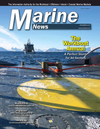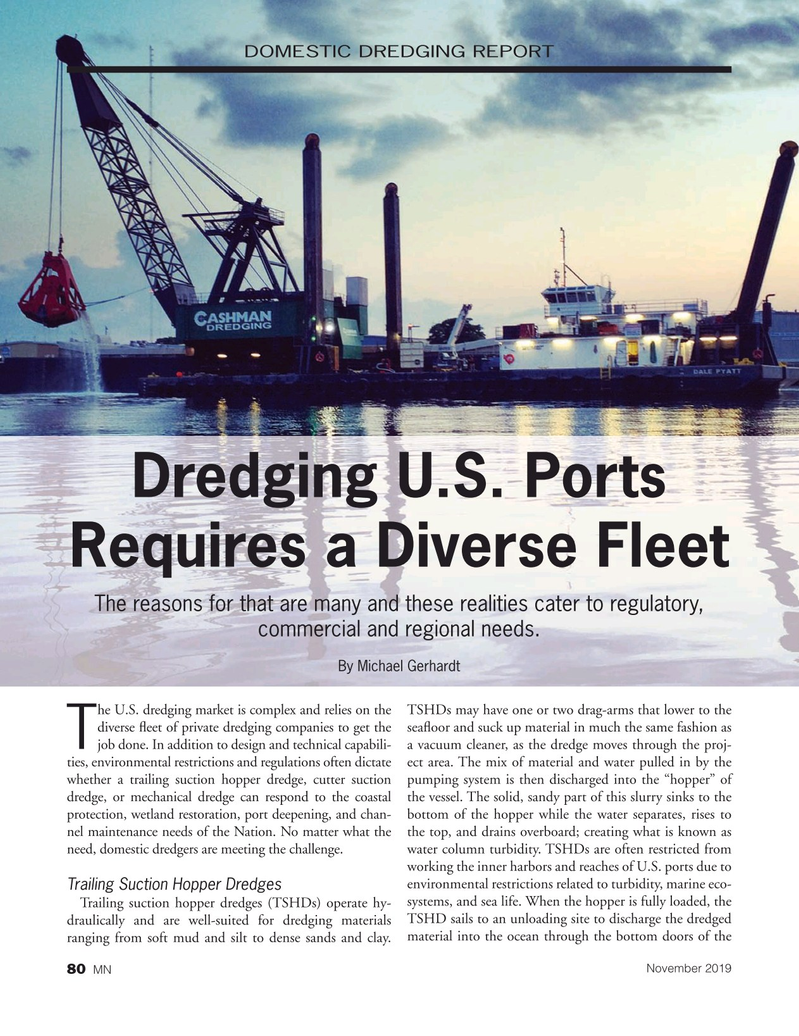
Page 80: of Marine News Magazine (November 2019)
Workboat Annual
Read this page in Pdf, Flash or Html5 edition of November 2019 Marine News Magazine
DOMESTIC DREDGING REPORT
Dredging U.S. Ports
Requires a Diverse Fleet
The reasons for that are many and these realities cater to regulatory, commercial and regional needs.
By Michael Gerhardt he U.S. dredging market is complex and relies on the TSHDs may have one or two drag-arms that lower to the diverse ? eet of private dredging companies to get the sea? oor and suck up material in much the same fashion as job done. In addition to design and technical capabili- a vacuum cleaner, as the dredge moves through the proj-
T T ties, environmental restrictions and regulations often dictate ect area. The mix of material and water pulled in by the whether a trailing suction hopper dredge, cutter suction pumping system is then discharged into the “hopper” of dredge, or mechanical dredge can respond to the coastal the vessel. The solid, sandy part of this slurry sinks to the protection, wetland restoration, port deepening, and chan- bottom of the hopper while the water separates, rises to nel maintenance needs of the Nation. No matter what the the top, and drains overboard; creating what is known as need, domestic dredgers are meeting the challenge. water column turbidity. TSHDs are often restricted from working the inner harbors and reaches of U.S. ports due to environmental restrictions related to turbidity, marine eco-
Trailing Suction Hopper Dredges systems, and sea life. When the hopper is fully loaded, the
Trailing suction hopper dredges (TSHDs) operate hy- draulically and are well-suited for dredging materials TSHD sails to an unloading site to discharge the dredged ranging from soft mud and silt to dense sands and clay. material into the ocean through the bottom doors of the
November 2019
MN 80
MN Nov19 Layout 66-81.indd 80 MN Nov19 Layout 66-81.indd 80 10/28/2019 4:39:52 PM10/28/2019 4:39:52 PM

 79
79

 81
81
